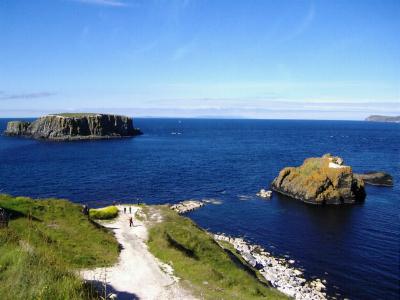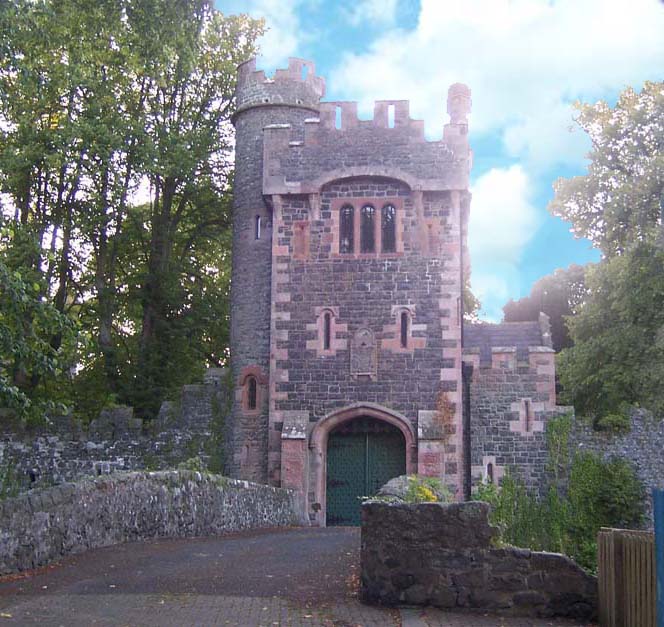|
The Glens
of Antrim.
|
|
| |
| The
nine glens of Antrim situated on the northeast corner of Ireland, with
Scotland a mere thirteen miles distant across the Sea of Moyle, were until
1834 in a state of semi isolation from the rest of Ireland, The glens were the last area of Ulster in which Gaelic was spoken, the coming of the road effectively brought this to an end. Of recent years there has been an upsurge of interest in local dialects, particularly the Ulster Scots of Antrim and east Down, to the extent that there is now a weekly program on local radio. The names of the glens, and generally accepted meanings are from south to north,
The people of the glens are descendants of both the ancient Irish and their cousins the Hebridean Scots, with whom contact and trade were a short boat trip away. The areas sheer physical isolation and elemental beauty has endowed the people with a great store of Irish myth and legend, they are great storytellers. If you are fortunate to engage one of the older ones in conversation, you may discover the haunts of the 'wee folk' and the dire consequences to be endured by anyone rash enough to cut down a fairy thorn. Traditional music is an important aspect of life in the glens with sessions in many of the local pubs. The Antrim coast road is a splendid drive, it runs under bridges and arches, passing bays, sandy beaches, and harbour's each village in turn displaying its own particular uniqueness. At The village of Cushendun has a beautiful sandy beach and some Cornish style cottages looked after by the National Trust. Take the old track over the glens from Cushendun to Ballycastle you will pass Loughareerma, 'the vanishing lake'. It is said one day it was empty, the next day it was full of water! The glens are steeped in folk lore, from one of the harbour's, it's said, sorrowful Deirdre and the sons of Uisneach embarked for Scotland to escape the wrath of King Conor. It was in Glenshesk (sedgy glen) in 1559 that the MacQuillins were defeated by and almost exterminated by Sorley Boy McDonnell, giving the McDonnell's control of a large portion of Antrim. In the past the area seen much industrial activity with the mining of limestone and iron oar. In 1854 the Marchioness of Londonderry built Carnlough harbour to export limestone from the nearby quarry's, the ship loaded under a chute in the harbour. Glenarm village too was involved in this trade, iron oar was exported from here also. Most of the cargo's were probably destined for the blast furnace of the English midlands, this trade carried on into the 1970's when cheaper foreign imports rang the death knell of much of British industry.
|
||||
|
|

 Glenarm the castle
beside the town is the home of the Earls of Antrim. The red curfew tower
in the cent re of Cushendall was built in 1809 as 'a place of confinement
of idlers and rioters' The inn in Carnlough was once owned by Sir Winston
Churchill.
Glenarm the castle
beside the town is the home of the Earls of Antrim. The red curfew tower
in the cent re of Cushendall was built in 1809 as 'a place of confinement
of idlers and rioters' The inn in Carnlough was once owned by Sir Winston
Churchill.